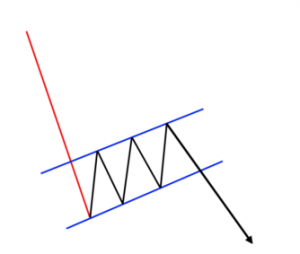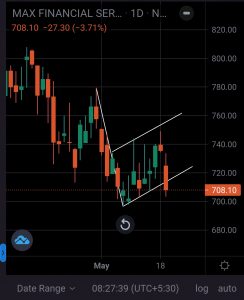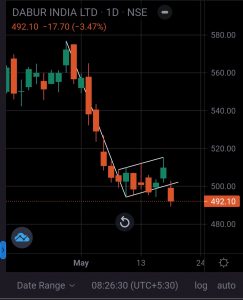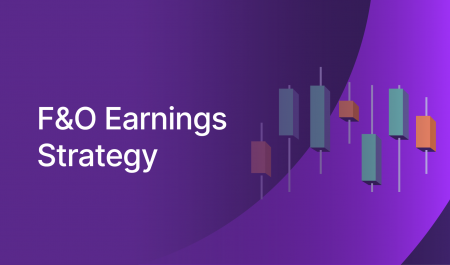What is a Flag and Pole pattern?
A flag and pole pattern describes a specific chart formation used to identify the continuation of a previous trend from a point at which the price moved against the same trend. In this pattern, the price makes a sharp move in one direction, reminding the viewer of a pole on a flagpole. Later, the price moves into the sideways range, attempts to change the trend and starts moving upwards with little to no momentum. This is considered the flag part of the flag and pole pattern.

Pattern Implications
The pattern signifies that buyers are aggressively trying to change the primary trend (down) by creating more demand for the stock. However, the stock moves in a range due to constant selling pressure on the rise. Through this pattern, the traders identify potential breakdowns in the stock. In case the price breaks the lower range of the flag and closes below it, one can expect a further continuation of the main bearish trend.
Trading Strategy
A trader can initiate a bear put spread strategy based on this technical pattern. In this strategy, a trader can go long on ATM (at-the-money) put option and initiate a short position in a faraway OTM (out-of-the-money) put option, both belonging to the same expiry. The short OTM put option acts as a hedge to the long ATM put option, thereby capping a trader’s profit or loss to a certain level.
Meanwhile, MFSL and Dabur have shown a similar pattern on their daily charts.
 Note: The chart illustrated here is for better understanding and educational purposes only.
Note: The chart illustrated here is for better understanding and educational purposes only.
 Note: The chart illustrated here is for better understanding and educational purposes only.
Note: The chart illustrated here is for better understanding and educational purposes only.
Disclaimer
Derivatives trading must be done only by traders who fully understand the risks associated with them and strictly apply risk mechanisms like stop-losses.
We do not recommend any particular stock, securities and strategies for trading. The securities quoted are exemplary and are not recommendatory. The stock names mentioned in this article are purely for showing how to do analysis. Take your own decision before investing.


